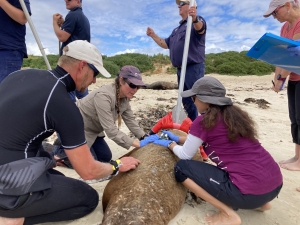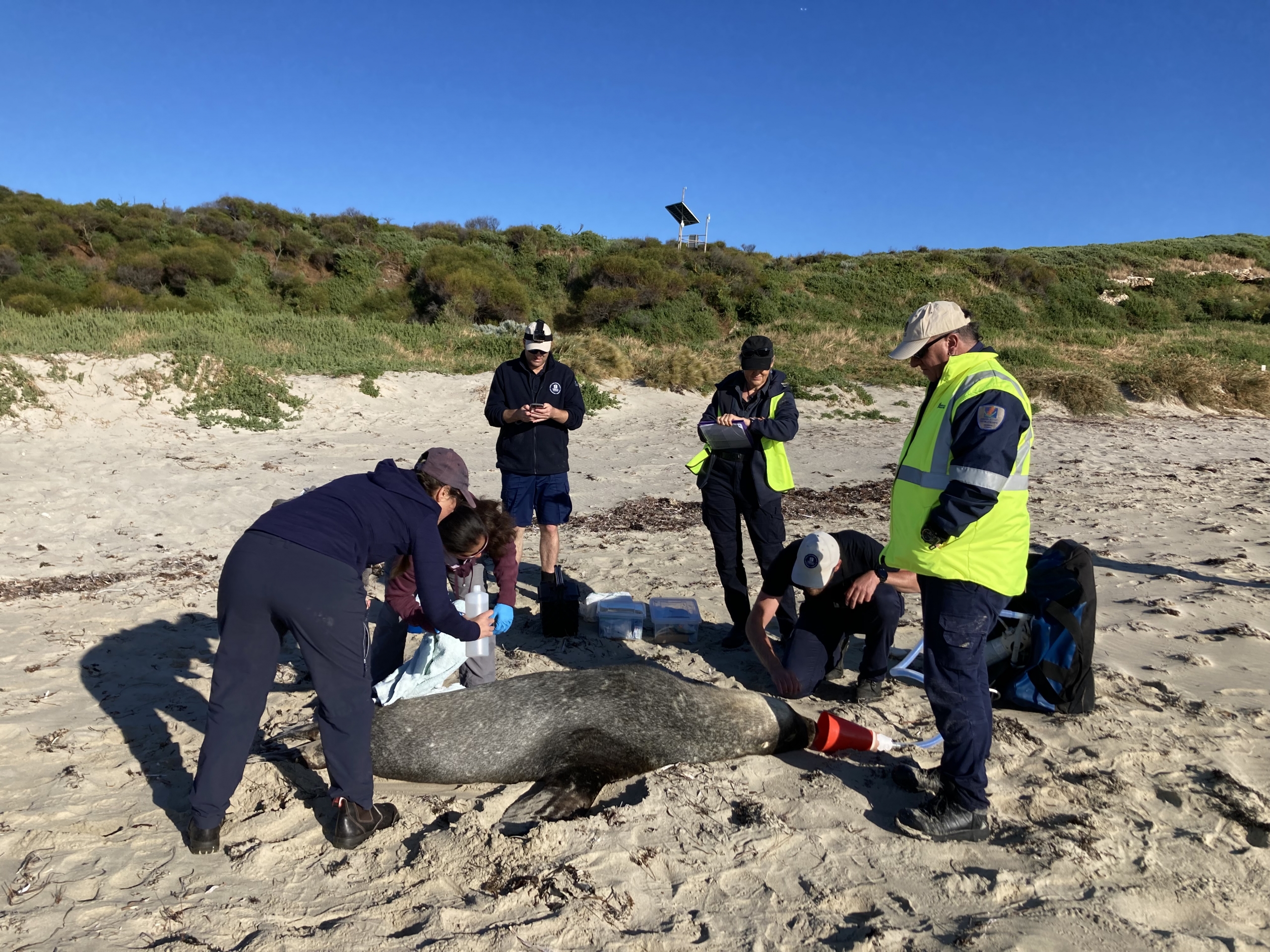Hippo sedation adapted for Perth sea lion tagging
Even for a veterinarian who regularly anaesthetises antelopes, giraffes and hippopotamuses, the Australian sea lions off Perth were a new challenge for Werribee Open Range Zoo’s Dr Brett Gardner.
The Victorian based wildlife vet, supporting Dr Simone Vitali – a former specialist veterinarian with the Department of Biodiversity Conservation and Attractions in Perth – helped fit satellite tracking devices to the endangered mammals after using a novel anaesthetic regime designed to reduce the risk of drowning and aid a quicker recovery.
Dr Gardner said the team working on the WAMSI Westport Marine Science Program satellite tagging operation included boat and beach crews as well as swimmers.
“For sea lions, the water is their safe space when they are stressed but when they have just been anaesthetised it is dangerous for them to be there,” Dr Gardner said.
Traditional methods induce a heavy sedation or even full anaesthesia, which can be risky for the animals. The sea lions’ anatomy including their breath-holding ability, more compressible ribcage and vulnerable trachea add to challenges around anaesthesia.
“We used a combination of drugs that induce a light sedation, and we had members of the team on the beach and on boats ready to administer medication that reverses their effects in the case of an emergency such as a potential drowning.”
“This lighter sedation is predominantly used to free marine mammals that become caught in fishing line and discarded rope where a heavy sedation would be too dangerous.”
Dr Gardner said the way the sea lions are selected for darting is important.
“We try to target animals that are less likely to react by fleeing into the water, so sleeping sea lions are preferable to ones that are awake.”

“When we dart animals that are sleeping rather than ones that are alert, they tend to respond like it’s one of their mates that’s bitten them and then they settle down and the anaesthetic takes effect.”
The islands in the Perth metropolitan region are used exclusively by male sea lions but this too posed unique challenges.
“The problem with the Australian sea lion bulls is that they were all on the water’s edge, literally, less than 25 metres away and some are less than five metres from the water.”
“Also, because of their sheer size and their fat deposits you’ve got far fewer suitable areas for a dart to be placed.”
A paper on the anaesthetic regime’s use in Australian sea lions is being written and Drs Gardner and Vitali, said there were no adverse effects observed and the satellite tags were successfully attached to the animals.

